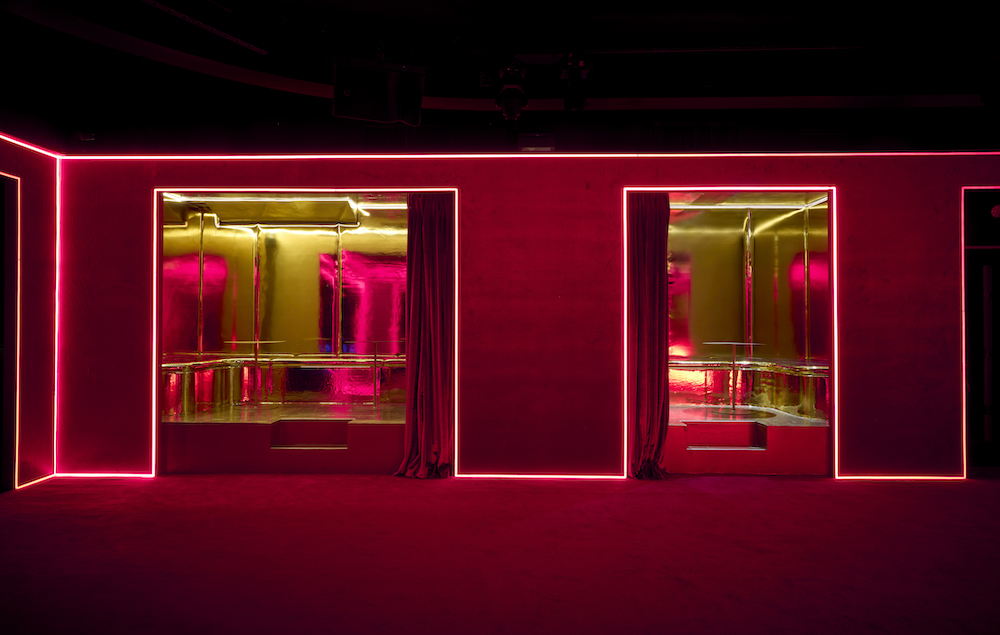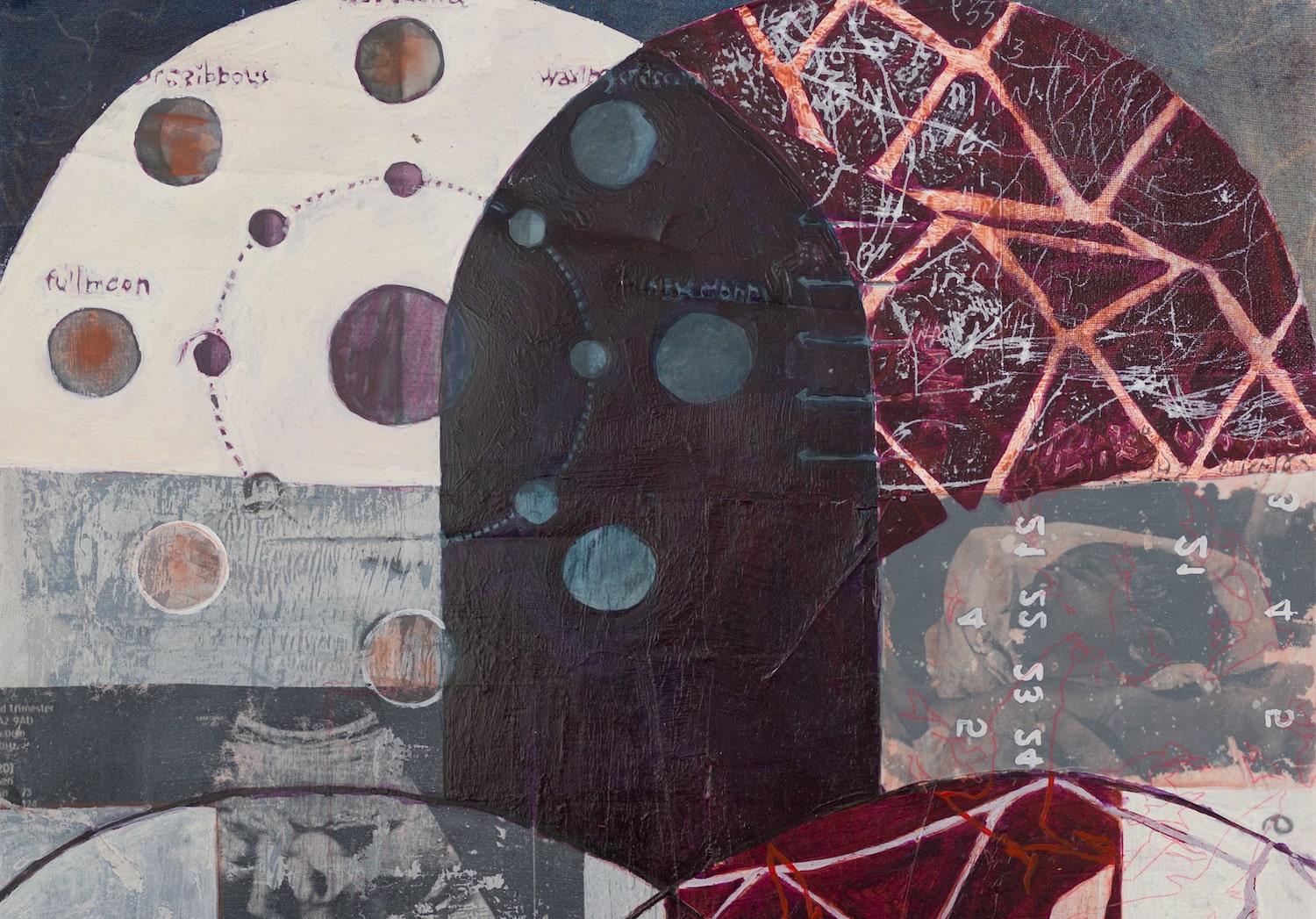Currently on view at Gladstone Gallery in New York is Wangechi Mutu’s “Ndoro Na Miti.” The title of the exhibition comes from the Gikuyu words for “mud” and “trees,” the main materials used to create the work. The exhibition is an entirely new direction for the artist, known for her fantastic paintings and collages that deal with issues of feminine representation, mythologies, violence, and the relationship between the body and nature.
For this show, Mutu primarily worked in 3D using the earth and plants around her studio in Nairobi. Whitewall spoke with Mutu just hours before the opening of “Ndoro Na Miti” at the end of January. She told us about returning to her roots in sculpture, telling the stories she wants to tell, and why we won’t survive without women leading the way.
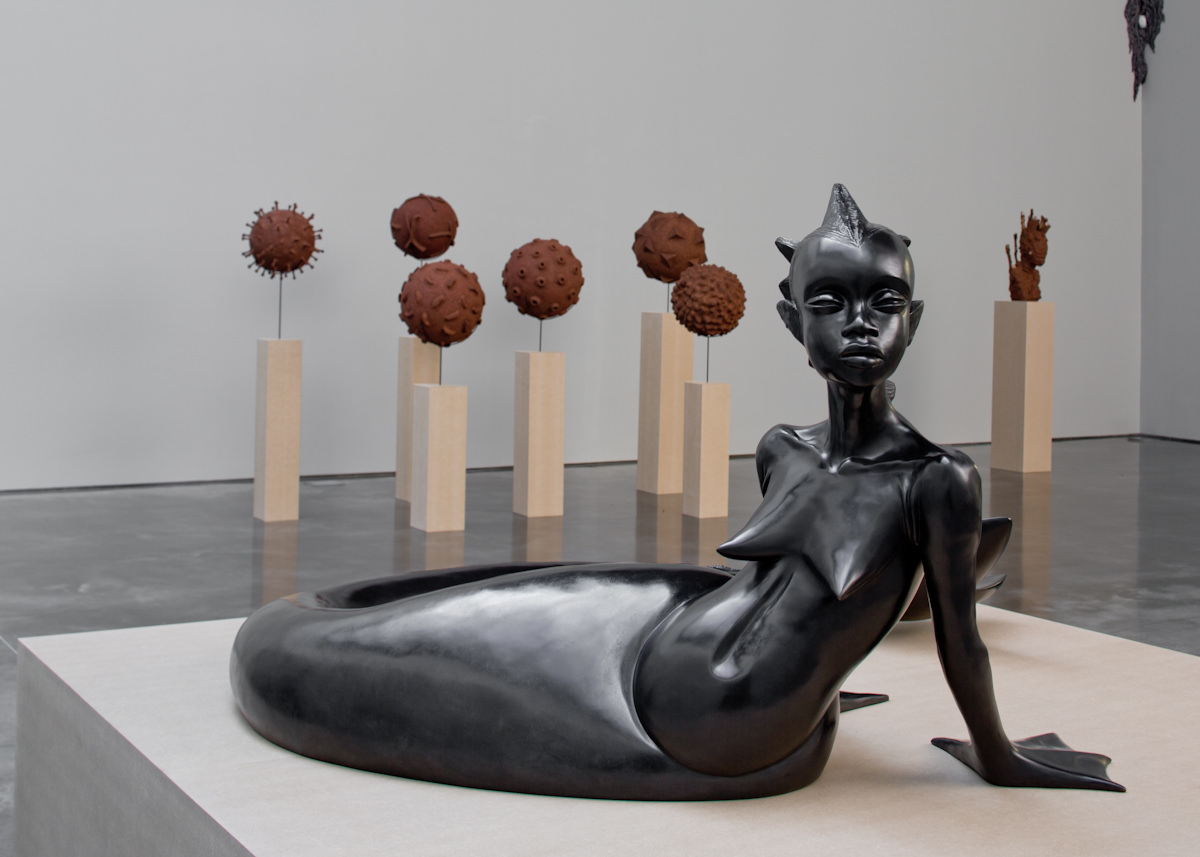
Installation view of Water Woman by Wangechi Mutu, 2017 in Ndoro Na Miti at Gladstone Gallery, New York, January 26 – March 25, 2017. Photo by David Regen. Copyright Wangechi Mutu. Courtesy of the artist and Gladstone Gallery, New York and Brussels.
WHITEWALL: This show is a totally new direction for you. What was the starting point for it all?
WANGECHI MUTU: Interestingly enough, my training and my Masters was in sculpture. I started in sculpture but for many different reasons I didn’t pursue making objects right after school. It was impractical for me. So I started drawing and making collages as a way to continue my conceptual thread from graduate school. And it’s taken me this many years to return back to three dimensions. So it’s really a return to something I loved and studied. I’ve come back to it because I have access to the materials and to the headspace and to the ideas that I’ve been putting together for awhile now.
WW: What allowed you to return to sculpture—was it timing, materials…?
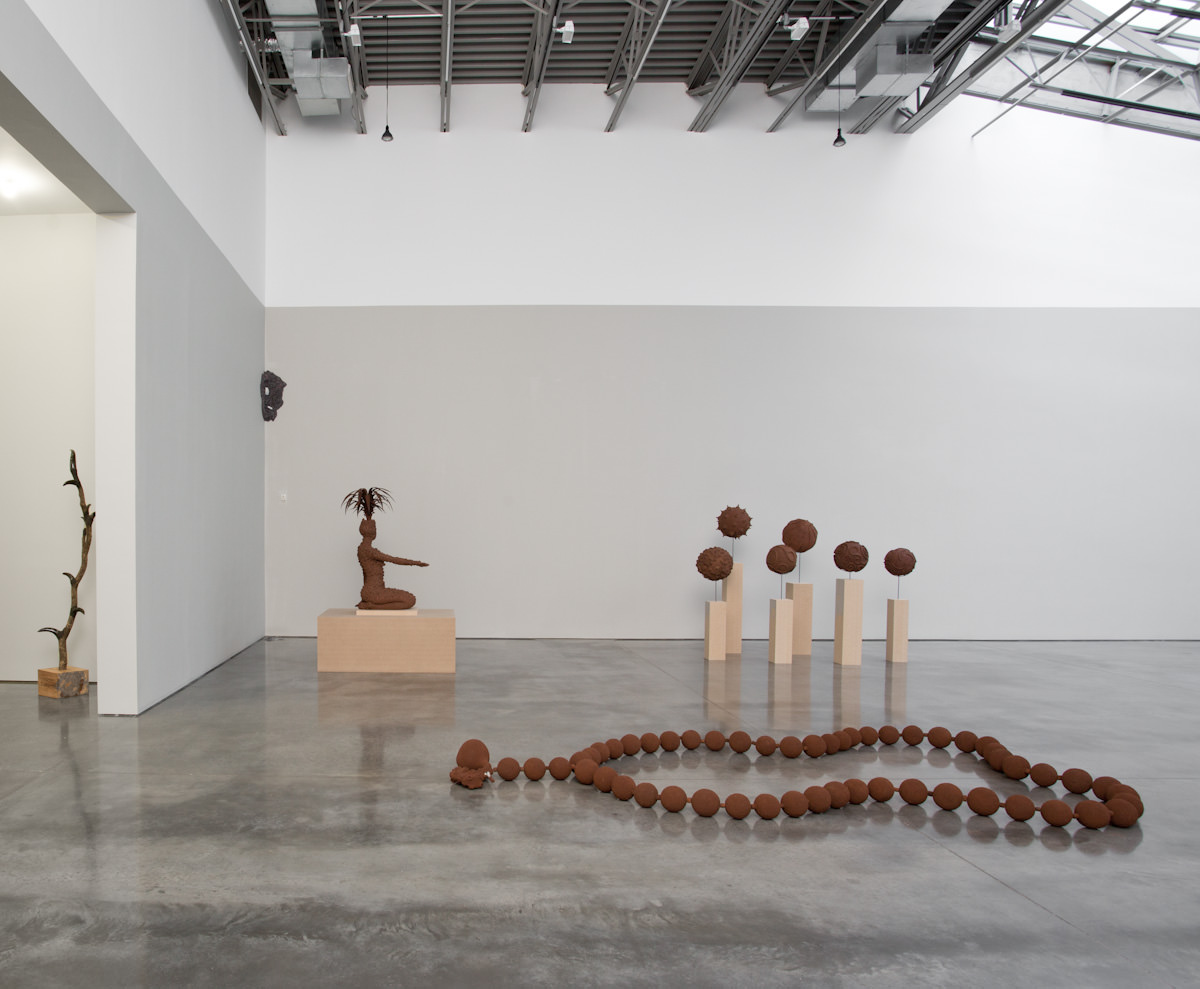
Installation view of Prayer Beads by Wangechi Mutu, 2016 in Ndoro Na at Gladstone Gallery, New York, January 26 – March 25, 2017. Photo by David Regen. Copyright Wangechi Mutu. Courtesy of the artist and Gladstone Gallery, New York and Brussels.
WM: The main reason that I’m able to think with objects and materials at the forefront is because I have access to them in my Nairobi studio. It’s a very natural and immediate reaction to an environment that I was raised in and an environment that speaks to the many issues that relate to the deep mythologies that are present in earth materials. All of these things I get to exist around when I’m in my Nairobi studio. I get to really delve into them. There is no overthinking of why I’m attracted to these elements.
WW: How long have you had that studio? How much time do you get to spend there?
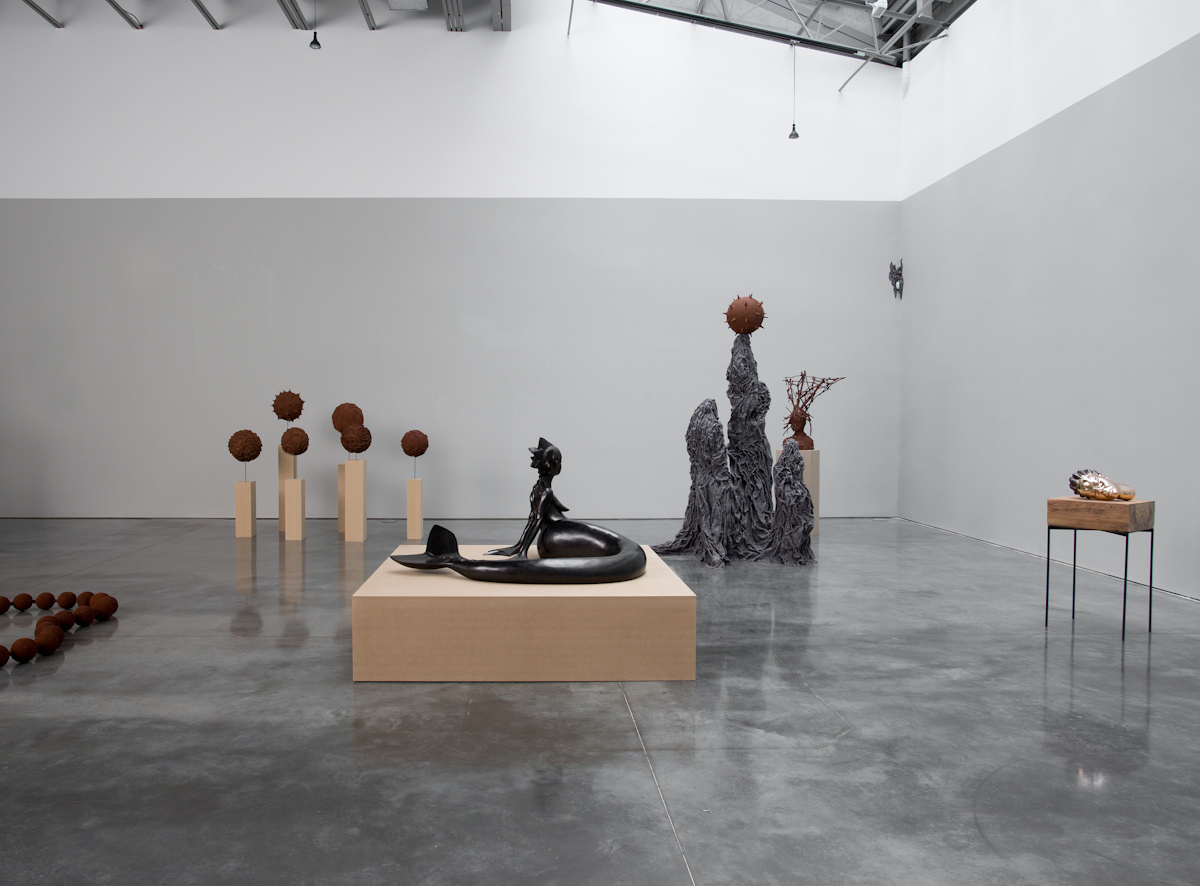
Installation view of Ndoro Na Miti by Wangechi Mutu at Gladstone Gallery, New York, January 26 – March 25, 2017. Photo by David Regen. Copyright Wangechi Mutu. Courtesy of the artist and Gladstone Gallery, New York and Brussels.
WM: I’ve had it a little over a year and it’s back and forth situation. I never imagined it was going to be possible in the way that it is. It’s fruitful and satisfying.
WW: In your work, there’s always been references to nature via imagery. But this is the first time you’re making 3D objects with natural materials like dirt and twigs.
WM: I’ve always had a deep love of nature. The ideas that I’ve been painting and drawing for almost a couple of decades now have resonated with this powerful honoring of what nature is capable of and how gracious, cruel, enigmatic, and incomparable nature and the earth is. But I haven’t had the ability to sink my hands into it or really shape these natural forms that I’ve been representing and re-representing. Often I break these images and organisms down and recreate them into these other-worldly characters.
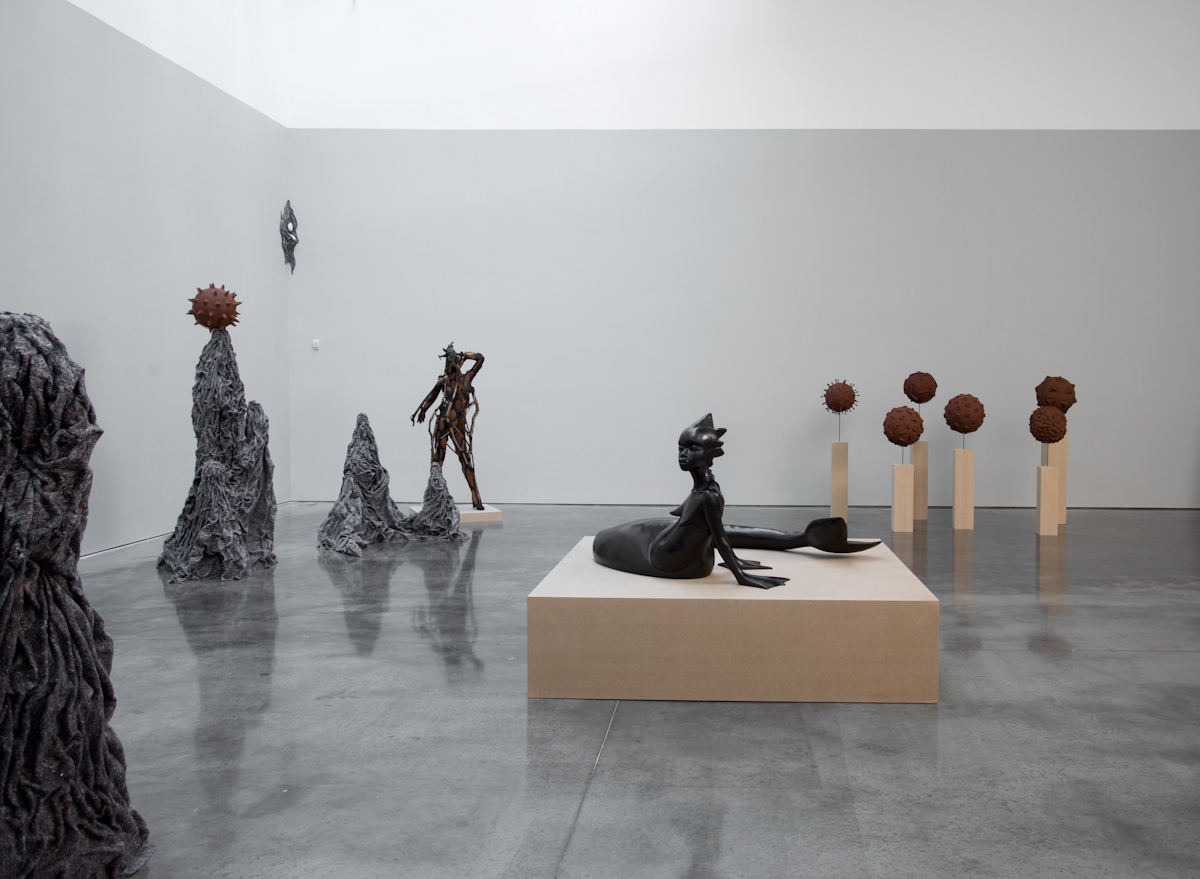
Installation view of Ndoro Na Miti by Wangechi Mutu at Gladstone Gallery, New York, January 26 – March 25, 2017. Photo by David Regen. Copyright Wangechi Mutu. Courtesy of the artist and Gladstone Gallery, New York and Brussels.
I think in this case, out of serendipity, circumstance, and pure will and love of creating, I’ve found a way to get closer to the landscape that speaks to me. It helps me interpret my very existence and through that I’ve been able to take those materials and charge them with the same power they’ve given me. This is something I’ve been trying to do in two dimensions. I had to destroy these textures that represent nature and women in our cultures in ways that don’t fully tell the stories that I want to tell, and recreate them in the collage and painting format.
Now it’s different. I’ve gotten to this stage where I want to access those ideas through the very materials that I most feel touched by and enamored with. It’s a very instantaneous, simple, and deep connection to land and space, and maybe also land politics. There’s a quick corrosion of the value of land that we’re all experiencing through environmental degradation and the lack of respect for natural resources. So I’m scooping them up and making them mine.
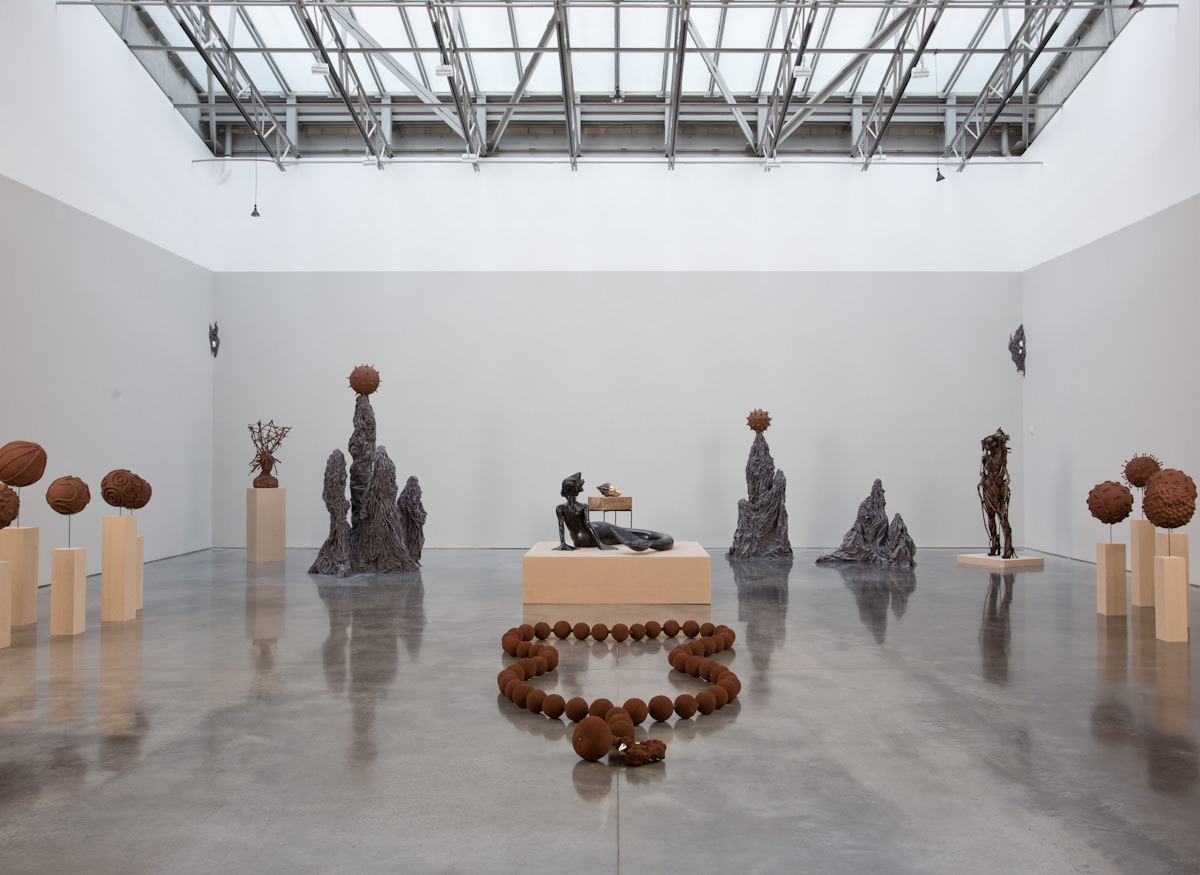
Installation view of Ndoro Na Miti by Wangechi Mutu at Gladstone Gallery, New York, January 26 – March 25, 2017. Photo by David Regen. Copyright Wangechi Mutu. Courtesy of the artist and Gladstone Gallery, New York and Brussels.
WW: And into these powerful, non-earthly forms. It feels like you’re giving them a different life.
WM: I’m representing psychology. I’m representing mental state. I’m representing inner turmoil. I’m representing human dysfunction and distortion. But through these extremely beautiful, very healthy kind of materials that in many ways are going to outlive me, and all of us—soil and gems and rocks and petrified trees.
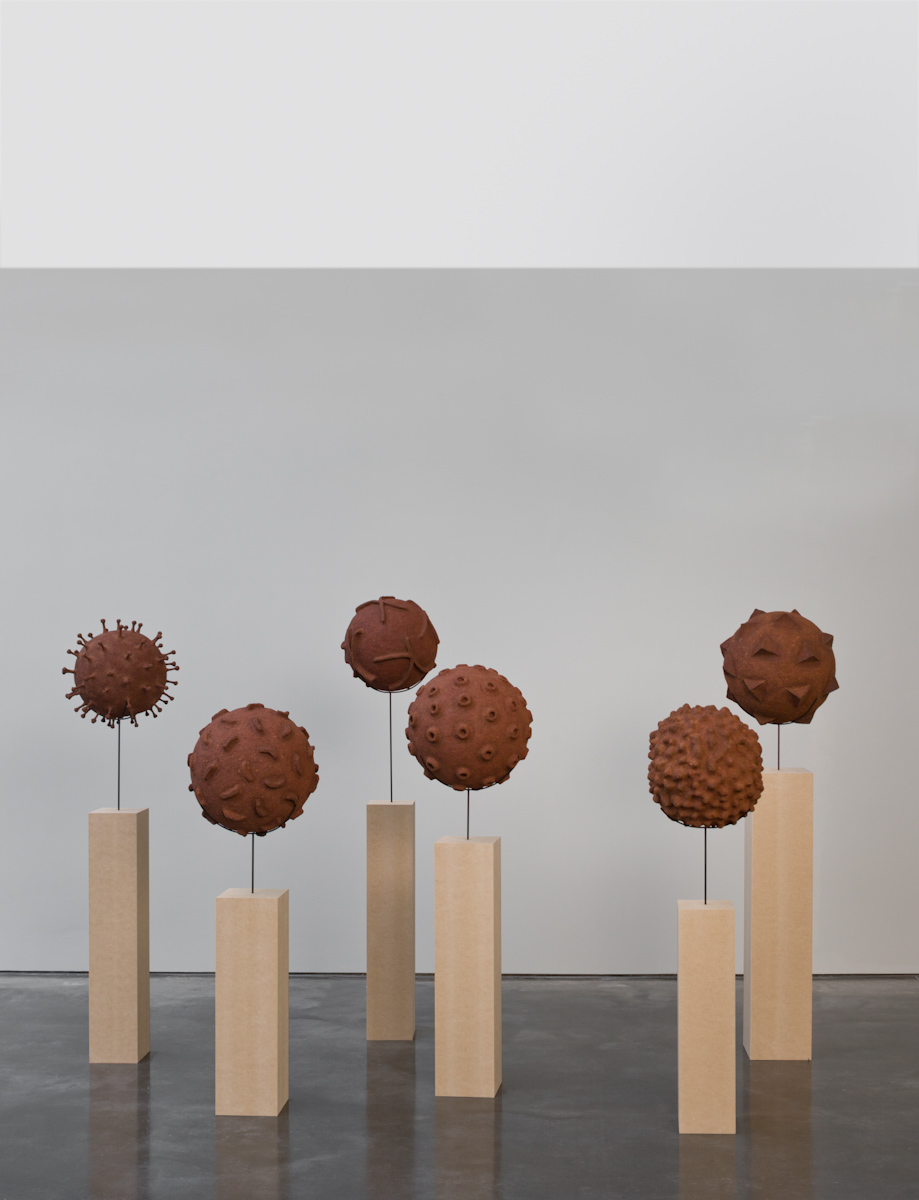
Installation view of Ndoro Na Miti by Wangechi Mutu at Gladstone Gallery, New York, January 26 – March 25, 2017. Photo by David Regen. Copyright Wangechi Mutu. Courtesy of the artist and Gladstone Gallery, New York and Brussels.
WW: There are also a few works in bronze in the show. What is it like working on a bronze sculpture?
WM: I need to really consider shape and form when I work in bronze, because it is often out of your control. Once you’ve done a tremendous amount of planning, then you have to leave it over to experts and technicians to get the results. You can’t sit there and carve and massage the bronze the way you want. I want them to be mine in every way, so it’s not outsourcing this knowledge, really just making sure that I can translate it from one material, which is quite wet and primal and fleshy, into something else. It’s extremely heavy, it persists and is durable.
WW: It has real permanence.
WM: Yeah, and I love that. I didn’t worry about that much for a long time [in my work]. I like the idea of that being part of the continuation now. Not in everything, I think it would be very vain to consider everything as a monument. But I like thinking about something being able to live outside, next to a body of water or by a stream…
WW: With this show of work made from the earth, featuring powerful female figures, I wonder if social and political issues of climate change and movements like the recent Women’s March were running through your mind while making it?
WM: I think it’s all connected. I think the work grew out of the understanding that this is a crazy moment. And that we are, in many ways, in charge of the destiny of this earth. Women have a specific role to play in the future of the existence of our earth. I’ve always carried that as a mantra. I know that there is no way that the role of women can be continuously left out of the decisions. We won’t survive without women leading the way into and out of this madness.
But I think the work is also solace. I wanted to create a temple and a place where I can immerse myself in thought and meditation about these issues and reinforce the strength that it takes to get up in the morning and do important things and say courageous things. I hope people come to any art show, and in particular this one, with the sense of hope and in search of something beautiful, inspiring, strong, and frightening.
It’s still for me to see. I’ve just born this child, so I don’t even have the full capacity to express what is happening. I just know I’m very satisfied and full that it’s done and it’s ready to be witnessed.
“Ndoro Na Miti” is on view through March 25 at Gladstone Gallery in New York.






